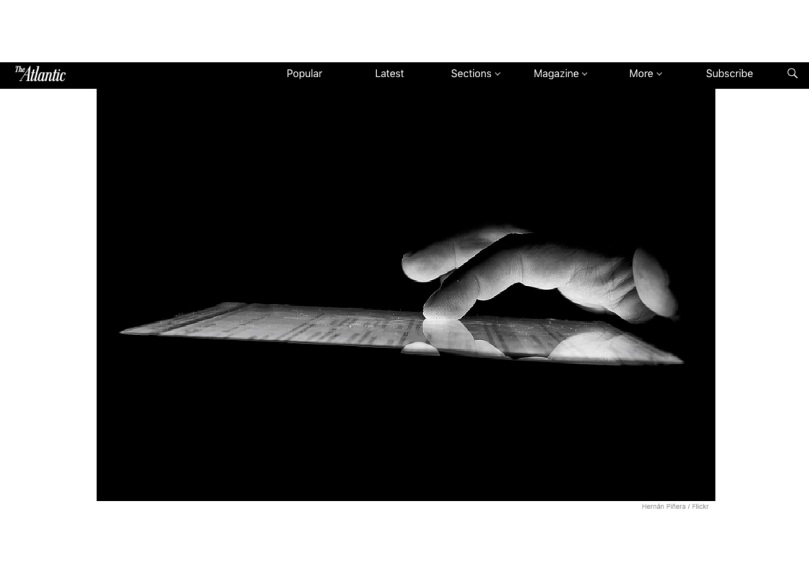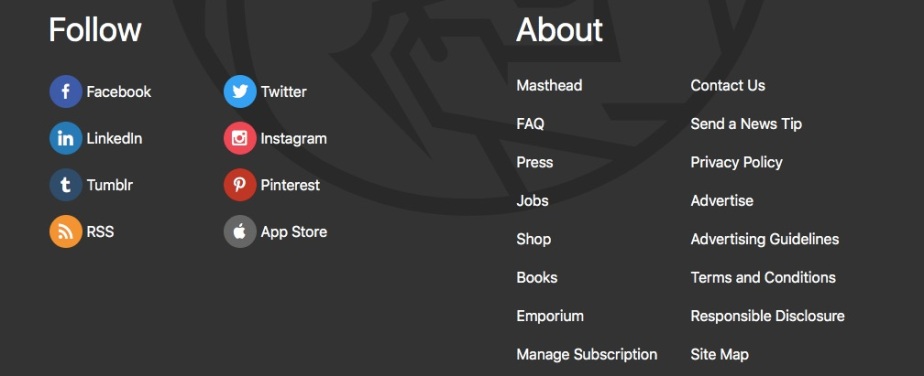“Social media… it’s the future for the new generation.”
– Cameron Dallas
It’s been speculated that the death of newspaper may not be so far way. As improvements in technology have rapidly changed and shaped the world into how it is today, so too has it lead to a rapid decline in printed newspapers. In The United States over half of Americans exclusively get their news from online sources, including social media sites. Newspaper companies were forced to make a choice; throw in the towel or move into the 21st century.
Although The Atlantic may not fit exactly into that category, the 160 year old magazine company has continuously remained successful due to their easily accessible social media presence, quality of work, as well as keeping up to date with the latest journalism trends.
“We want to join the urgency of the web with the impact The Atlantic has always aspired to in magazine journalism.”
J.J. Gould, The Atlantic
While the magazine company still publishes 10 printed magazines yearly, their online sites are updated daily, covering breaking news, politics and international affairs, business and economy, education, technology, health, culture and the arts, and science. The website allows all users, subscribers or not, to access the entire range of articles published whether past or present. Many of the articles online feature many types of media including podcasts, video and audio pieces, photography, and more. The website has been designed for maximum efficiency, as each feature article not only contains links to related articles on the side of the page, but also contains the most popular unrelated articles at the bottom of the story. The Atlantic also features a tool bar at the top for easy navigation.


While both Facebook and Twitter sites don’t contain the full story they do contain direct links to the article on the website. Instagram however appears to be only photos with a short blurb, although it does contain a like to website there are no links that take the reader directly to the article on the website. For followers of The Atlantic on Instagram, this seems like an impractical use of social media as the reader would have to exit Instagram and then search for the article in question. While it’s really not difficult to do so, it seems an unnecessary step to take.
Overall The Atlantic has transitioned into the 21st century with grace. They have created a website that is both efficient and user friendly. Through the use of digital media they have managed to enhance and captivate an audience. By keeping up with social media trends they have remained successful thus allowing them to cultivate more followers than ever before. And while there might still be some fine tuning needed The Atlantic is a wonderful example of trends within the journalism community and of how to effectively use social media as a form of promotion.


